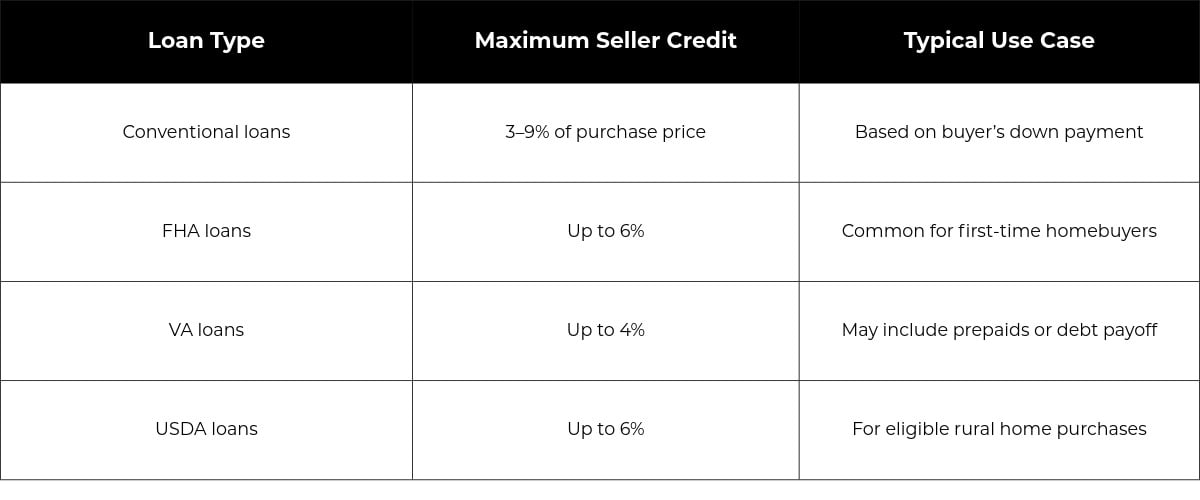When it comes to buying or selling a home in Washington State, the negotiation often goes beyond the sale price. Between closing costs, down payments, and ever-changing interest rates, there’s a key piece of the puzzle that can make a deal smoother for both sides — the seller credit.
Many homebuyers hear about seller credits but aren’t sure how they actually work. This guide breaks down what they are, how they can help with your upfront costs, and why they’ve become a smart strategy in today’s real estate market.
What exactly is a seller credit?
A seller credit — sometimes called a seller concession — is money that a home seller agrees to contribute toward a buyer’s closing costs. Instead of dropping the purchase price, the seller offers a credit that reduces the buyer’s upfront expenses at the closing table.
These credits are written into the purchase agreement and approved by the lender as part of the home-buying process. In competitive markets like Seattle, Bellevue, and Kirkland, a seller credit can make the difference between a deal that closes and one that falls through after the home inspection.
How do seller credits work?
A typical homebuyer faces several expenses at closing:
- Loan origination fees and underwriting charges
- Appraisal fees
- Title insurance and escrow costs
- Property taxes and homeowners insurance prepaids
- Optional discount points to buy down the interest rate
A seller credit can be applied toward most of these items, easing the upfront burden on buyers.
For example:
If a Seattle home sells for $900,000 and the seller offers a $9,000 seller credit, that amount might cover a large portion of the buyer’s actual closing costs, helping them reserve more cash for their down payment or future maintenance.

Why would a seller offer credits?
There are a few reasons home sellers use credits as part of their strategy:
- To attract more buyers. In a balanced or mild buyer’s market, offering a credit can make your listing stand out without lowering the asking price.
- To smooth inspection issues. Instead of paying for repairs before closing, sellers can offer a repair credit so the buyer can handle them later.
- To offset higher rates. When interest rates rise, credits can help buyers afford rate buydowns or cover closing fees that might otherwise stretch their budget.
What can seller credits be used for and what can’t they cover?
Lenders typically allow credits to go toward:
- Buyer’s closing costs such as escrow, title, or loan processing
- Discount points to lower the buyer’s interest rate
- Prepaid expenses like property taxes or homeowners insurance
But they can’t be used for:
- The buyer’s down payment
- Renovations or repairs after closing
- Personal property or home furnishings
Every mortgage lender sets specific limits, so it’s important to confirm what’s allowed for your type of loan.
Are there limits to seller credits?
Yes. The seller credit limits depend on the loan type. Here are some comparisons:

If the credit ends up higher than the appraised value allows, the extra amount simply disappears at closing — buyers can’t receive cash back.
How are seller credits negotiated?
Negotiating a seller credit is a mix of timing, leverage, and communication between your real estate agent, lender, and the other side of the transaction.
For buyers:
- Talk with your real estate agent about which closing costs you’d like covered.
- Factor credits into your offer — if you ask for help with upfront costs, you might offer slightly closer to the list price.
- Get pre-approval from your lender so you know the maximum credit allowed for your loan.
For sellers:
- Work with your agent to decide how much flexibility your pricing allows.
- Use credits as a negotiation tool if the home inspection reveals small issues.
- Remember that sometimes a small seller contribution can keep the deal on track without dropping your sale price.
Pros and cons of seller credits
For homebuyers
Pros:
- Reduces upfront costs and makes homeownership more attainable.
- Helps first-time buyers compete even with limited cash for a down payment.
- Can fund rate buydowns, lowering the long-term monthly payment.
Cons:
- A slightly higher loan amount if the sale price stays firm.
- In a strong seller’s market, asking for credits could make your offer less competitive.
For home sellers
Pros:
- Maintains list price and comparable values for future appraisals.
- Attracts first-time homebuyers and FHA-qualified borrowers.
- Can resolve inspection negotiations quickly.
Cons:
- Reduces net proceeds at closing.
- Risk of exceeding lender approval caps if not structured carefully.
When are seller credits most common?
Credits tend to appear more in balanced markets or when inventory grows. According to the Northwest Multiple Listing Service (NWMLS), roughly one in four Puget Sound listings in mid-2025 included some form of seller concession — often to offset rising closing costs or support rate buydowns.
They’re also common when:
- Homes have been on the market more than 30 days.
- The property needs cosmetic updates.
- Builders or sellers offer incentives to close faster.
In contrast, during hot markets like 2021, when bidding wars were the norm, buyers rarely requested credits — they focused instead on securing the home itself.
Seller credit vs. price reduction
Which option is better — a seller credit or lowering the sale price? It depends on the buyer’s goals and the current market conditions. Here is a quick comparison:

Real-world example:
In Seattle, Bellevue, and Renton, the median home price in mid-2025 was around $900,000, with homes spending an average of 23 days on market (source: Redfin). As the pace cools, seller offer credits are resurfacing — especially on listings that need minor updates or have been active a few weeks longer.
In tighter micro-markets like Kirkland or Bellevue Eastgate, sellers might offer smaller credits (1–2%) rather than reducing the sale price. For buyers, that can mean the difference between qualifying for their home loan or sitting out the competition.
Key takeaways about seller credits
- A seller credit is a flexible way to make deals work without cutting price.
- They’re especially valuable when closing costs are high or interest rates climb.
- Used thoughtfully, credits can help both parties close faster and smoother.
- Always confirm seller credit limits with your lender before finalizing the contract.
FAQs about seller credits
Do seller credits affect the home’s appraisal?
No, seller credits don’t directly affect the appraised value. However, if the credit pushes the total deal above what the appraiser deems the home’s value, your lender may reduce or cap the allowable credit.
Can I use a seller credit for my down payment?
No. Seller credits can only cover closing costs, prepaid expenses, and rate buydowns — not the buyer’s down payment or personal purchases.
Are seller credits common for FHA loans?
Yes. FHA loans allow seller credits up to 6% of the purchase price, which can make them especially useful for first-time homebuyers who need help covering upfront costs.
Final thoughts
For many homebuyers in the Puget Sound region, a seller credit can bridge the gap between affordability and opportunity. It’s not just about saving on closing costs — it’s about creating win-win solutions that move deals forward.
If you’re thinking about selling and want to understand how credits could help your listing stand out, our team can guide you through every step of the home sale.
Get your free home valuation or explore the market near you:
- Seattle homes for sale
- Bellevue homes for sale
- Kirkland homes for sale
- Renton homes for sale
